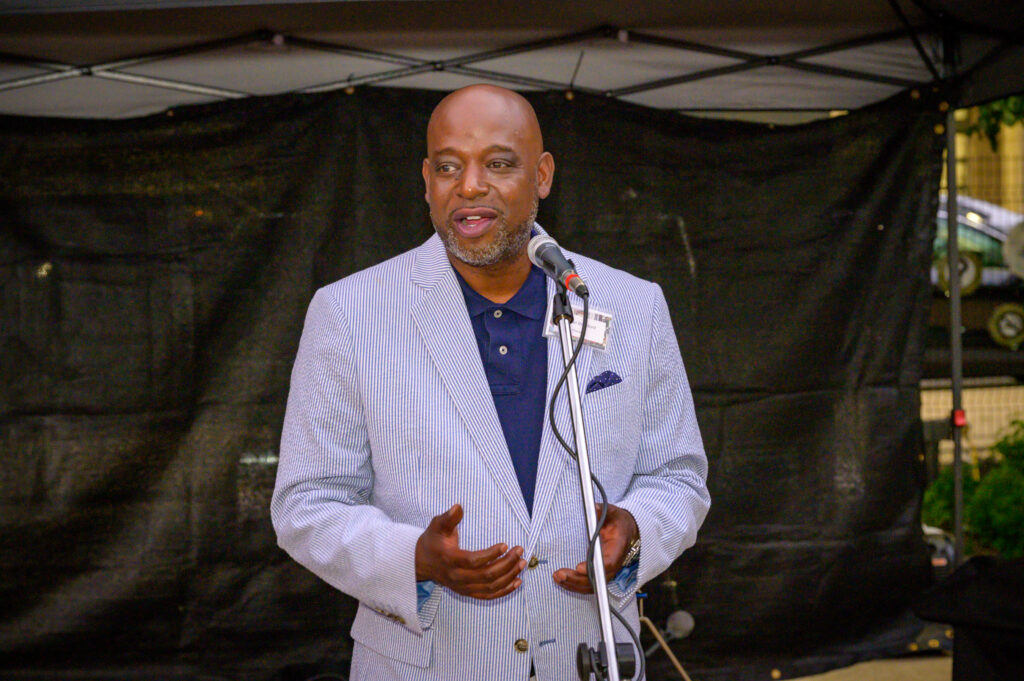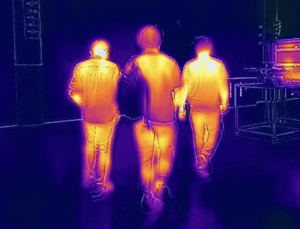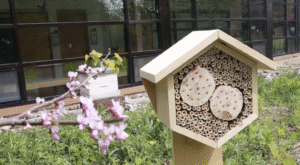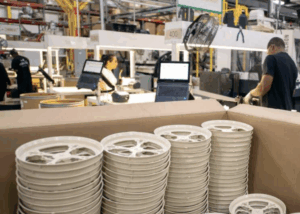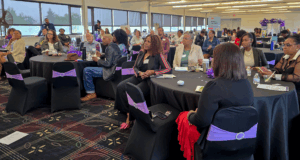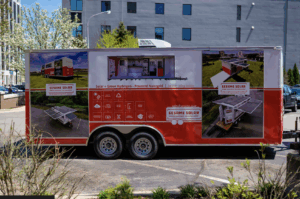Established in 1989, The Greening of Detroit is a nonprofit organization with a mission to inspire sustainable growth of a healthy urban community through trees, green spaces, healthy living, education, and job opportunities.
To date, it has planted 147,000 trees and trained more than 1,000 people through its five-year-old workforce development program.
Putting trees in the ground is job one for the organization, but it also is involved in stormwater management and providing landscaping services to residents and businesses in the communities they serve.
President Lionel Bradford has been with the nonprofit since 2010 and is proud of its 35-year history. SBN Detroit interviewed Bradford about the organization’s programs, impact, and future.
Q: What was the impetus to begin The Greening of Detroit?
A: For years Detroit was known as the Paris of the Midwest, partly because of the tree canopy cover the city used to have. Between 1950 and 1980 Detroit lost over a half million trees due to Dutch Elm Disease, urbanization, and neglect due to financial struggles. In 1989, The Greening of Detroit was founded to reforest the city of Detroit.
Since its inception, 147,000 trees have been planted throughout the city. We also started a youth employment program as a way to educate and take care of these trees. Our Green Corps Summer Youth program at its height employed 200 high school students. That number decreased due to COVID-19, but it’s coming back up.
In a nutshell, our organization has two main pillars: workforce development and green infrastructure.
Q: What are you currently working on in terms of tree planting?
A: We are in the third year of a five-year strategic plan where we are looking to plant 20,000 trees throughout Detroit, Hamtramck, and Highland Park, and train 300 individuals who have barriers to employment.
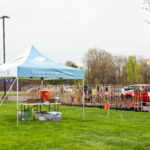
This plan fits into a larger initiative we are involved in called the Detroit Tree Equity Partnership. This is a collaboration with American Forest, DTE Energy, and the City of Detroit in which we are planning to plant 75,000 trees over the next five years.
There is a buzz in the city right now in terms of trees. We’ve done a lot of engagement and outreach. Recently we conducted a 500-tree giveaway, and there were still cars lined up after we gave away the last tree. It’s great to see this.
Q: What is your involvement with the Walter Meyers Nursery?
A: Walter Meyers is a tree nursery on 72 acres in Rouge Park that for years went untouched. In 2004, The Greening of Detroit – with the city’s permission – took over managing that property to serve as a training ground for our adult workforce development. We have used it as an outdoor classroom setting.
In 2017, we put together a master plan to turn it back into a working nursery operation. As an organization, we are looking for ways to generate revenue for our training programs and to plant our trees. We want to control our destiny and cut down the carbon footprint involved in having trees shipped in.
We have planted over 4,000 trees in the nursery and harvested our first 200 trees last year.
The goal is to get to a point where we are selling 5,000 trees annually to municipalities, the City of Detroit, and the community.
Q: What sustainable impact do you think this brings?
A: In addition to creating green infrastructure in the city, community engagement is at the heart of what we do. Our job is to get trees in the ground, but we do not want to impose our will. We want to be invited into communities. Not only do we want residents to have a say, but we also want them to be a part of the work. This is a model that speaks volumes in terms of sustainability, and it’s held up across the state and the country.
Q: How does The Greening of Detroit impact businesses?
A: We engage and work with business owners in the communities we are involved in. Many of them bring us in to green their properties.
The more green space we can add for businesses, the more it helps aesthetics and foot traffic. Green space and economic development go hand in hand.
Also, from an economic standpoint, our education program puts people into jobs doing work around the city, which enhances the economic viability of Detroit as well.

Q: In what other ways does the organization create green infrastructure in the city?
A: Stormwater management. We have installed three major bioretention ponds around the city that hold up to a million gallons of water. These are in Rouge Park, Chandler Park, and Eliza Howell Parks. We also work with residents and businesses to replace impervious surfaces with green infrastructure through our Land + Water WORKS Coalition.
Q: You have an adult workforce program from which over 1,000 Detroiters have graduated in the past five years. How does this work?
A: This is a six-week program called the Detroit Conservation Corps. Sixty percent of those who have graduated were previously incarcerated. We are passionate about helping that population get credentials and secure jobs that pay decent wages.
We work with a network of businesses looking to employ, most from the tree care and landscaping industries. These companies work in tandem with our advisory committee to help us build our curriculum and help with job placement. We have hired a small percentage of our trainees ourselves.
Q: What is the future of The Greening of Detroit?
A: Community engagement will always be a focus. We also are rebuilding our environmental education. These programs fell by the wayside before and during COVID-19, but we are working to get into schools, facilitate field trips, and educate our youth.
We truly believe that getting the Meyers Nursery operations up and running is key for us moving forward. It will be important for us to generate our revenue.
I’m proud we’ve been able to sustain the organization for 35 years. I feel good about the climate of the city in terms of how people feel about trees and think things will continue to get better from here.
Be sure to subscribe to our newsletter for regular updates on sustainable business practices in and around Detroit.


